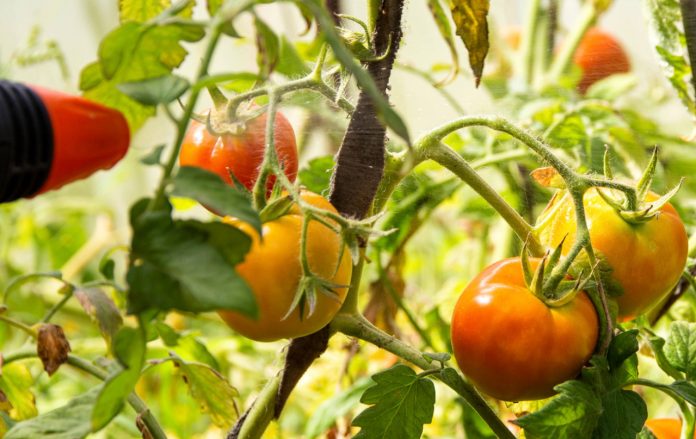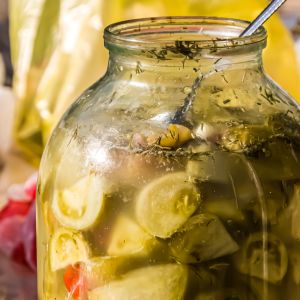Tomatoes are one of those vegetables that appear on our tables practically all year round. In the summer we make delicious salads or soups from them, in the winter we use previously prepared preserves. Tomato juice or tomato salad should be in every basement. That is why we often grow our own tomatoes in gardens and on the plot, and even on balconies. Unfortunately, it often does not happen. One of the most common diseases on tomatoes is potato blight. It causes a significant reduction in harvest and sometimes the loss of the entire crop. This is a difficult disease to combat, in which a quick response to emerging symptoms is important.
How to recognize potato blight on tomatoes?
In the initial phase watery, yellowish-brown, and later brown, shapeless, gradually enlarging spots appear on the edges of the leaves. On the other hand, on fruits you can see brown, slightly convex spots , clearly harder than the healthy part of the fruit. They penetrate deep into the fruit and can cover the entire tomato in a few days. The tomatoes appear to be rotting and burned. On the underside of the leaves, on the border of healthy and infected tissue, you can see a delicate white coating.
Where does potato blight on tomatoes come from?
Potato blight is a disease caused by species of fungus-like oomycetes. Spores are successfully spread by wind and water. Air temperature and humidity have a significant impact on the spread of the pathogen. Favorable weather for the development of blight is frequent and heavy rainfall, high air humidity, temperature around 15-18°C and long-term leaf wetting.
How to protect tomatoes from potato blight?
Picking tomatoes with the first small spots won’t help, the disease won’t stop and after a few days it will cover the entire fruit anyway.
First of all, as soon as you notice the first signs of the plague, you should immediately destroy the infected plants so that the plague doesn’t spread to other bushes.
You should also not use too much fertilizer with nitrogen, because it promotes infection.
Another very important rule is not to water tomatoes on the leaves. You should also not water tomatoes with sprinklers, because they spray water on the leaves. Watering cans without a strainer will be the best, so that you can water the bushes directly from the root, without sprinkling the leaves. It is very important that their leaves are as rarely wet as possible, so it is worth growing them under a roof, so that rain falls on them as rarely as possible. Tomatoes growing in greenhouses and foil tunnels must be regularly aired to prevent water vapor condensation.
Tomatoes should be planted as far away from potatoes as possible, they are most often the primary source of this disease. It is also worth regularly removing weeds from the nightshade family (e.g. black henbane and black nightshade) from around the tomatoes, because they can also be a source of infection.
After the harvest is finished, you need to remove dried, infected tomato shoots and leaves from the garden. They should not be composted.
You should also remove the lower leaves from the tomatoes, especially if they turn yellow or have any spots on them. This will prevent the pest from touching the ground and transferring the pest to the entire plant.
Natural spray for potato blight on tomatoes
Before you reach for chemical means to combat the blight, it is worth trying proven and effective natural methods. Then you can be sure that the tomatoes you harvest will be free of chemical substances.
Yeasts, proven in many situations, come to the rescue. Homemade yeast spray will prevent the appearance of blight, but will also inhibit the development of existing blight. To prepare the spray, prepare:
Dissolve the yeast in water, pour into a sprayer and spray the tomato bushes with this mixture once a week.
The second effective and natural spray is horsetail slurry. Thanks to the high content of silicic acid, it will prevent the formation of potato blight, but will protect the plants from powdery mildew and aphids.
You can prepare it from:
Pour water over the horsetail and set aside until the fermentation is complete. Strain the finished liquid through a sieve and dilute it with water in a ratio of 1:5.
Apply the spray once a week.
Message: right-click here to remove promoted text



